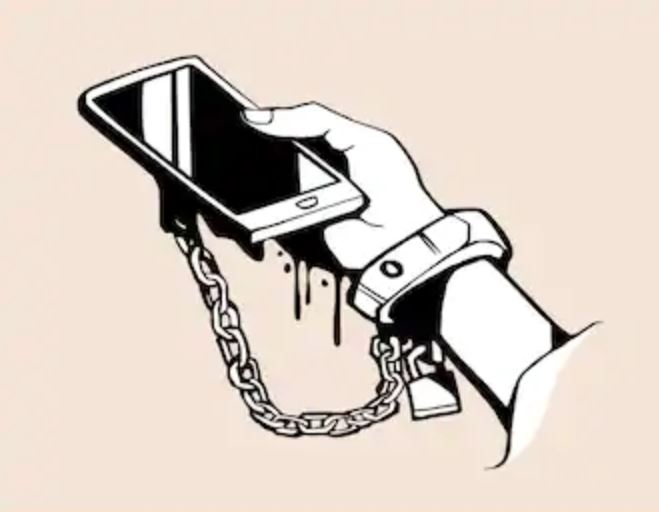
Do you know that twitchy feeling you get every time you scroll through Instagram? That is actually a sign of actual addiction.
The book How to Break up with Your Phone by award-winning health journalist Catherine Price, is a practical manual for a 30-day reset designed to put you on a path to moderation.
Its message feels particularly timely in an age where we spend 36 per cent more time on social media apps than eating and drinking. You think the message doesn’t apply to you? Here is the real reason you can’t stop mindlessly swiping on your phone and what you can do to stop:
Feel good hormone
When a cell-phone user experiences feelings of happiness and/or enjoyment from a particular activity (like a funny tweet on #KOTLoyals), the person is more likely to engage in that particular activity again (positive reinforcement).
Dopamine controls the pleasure centres in our brain. When this chemical is released, it feels good and makes us want more of whatever is boosting our dopamine levels. The use of a particular cell-phone activity might also operate under the principle of negative reinforcement (reducing or removing an aversive stimulus).
Pretending to take a call, send a text or check one’s phone to avoid an awkward social situation, for instance, is a common negative reinforcing behavior practiced by cell-phone users. That annoying habit of casually checking your texts while you’re talking?
Well, it’s so common, there’s now an actual name for it: phubbing, as in phone-snubbing. Any activity that is rewarded can become addictive. The rewards encourage higher involvement with and more time spent in the particular behavior.
Social media apps are designed to hook you
Do you find yourself mindlessly reaching for your phone or refreshing your social media feeds, even when you just checked them minutes ago? Don’t worry about your low willpower.
“Instagram,” Price explains, “has created code that deliberately holds back on showing users new ‘likes’ so that it can deliver a bunch of them in a sudden rush at the most effective moment possible—meaning the moment at which seeing new likes will discourage you from closing the app.”
That is how social media apps are designed to manipulate brain chemistry and elicit addiction.
The false contentment
Email, in particular, gives us satisfaction due to what psychologists call “variable ratio reinforcement.” That is, we never know when we’ll get a satisfying email, so we keep checking, over and over again.
Stay informed. Subscribe to our newsletter
\“It’s like slot machines,” Dr Greenfield, a British neuroscientist says. “We’re seeking that pleasurable hit.” Smartphones, of course, allow us to seek rewards, including videos, Twitter feeds, and news updates, in addition to email, anytime and anywhere.
So how do you overcome this addiction?
Turn off notifications - Almost every app on your phone can be tweaked so that push notifications are disabled.
Do not disturb - When you get home at night, put your phone on silent and leave it in a drawer. Set a time to check your phone to see if you’ve missed any urgent calls. If there are none, then put it back in the drawer.
Weaken the habit loop by turning off the triggers - alert sounds for multiple different apps, vibrations, notifications onscreen and phone light.
Carry a book with you and read it. It’s not pretentious, it’s just smart. This way whenever you’re waiting in line and bored, you have something to look at that isn’t your phone.
Get drastic with a digital detox - If you are open to trying something more extreme, Daniel Sieberg, author of The Digital Diet, suggests doing a full ‘digital detox’, where you spend an entire weekend with no access to technology. You might find after the detox, you don’t really need your phone, you just wanted it.
 The Standard Group Plc is a
multi-media organization with investments in media platforms spanning newspaper
print operations, television, radio broadcasting, digital and online services. The
Standard Group is recognized as a leading multi-media house in Kenya with a key
influence in matters of national and international interest.
The Standard Group Plc is a
multi-media organization with investments in media platforms spanning newspaper
print operations, television, radio broadcasting, digital and online services. The
Standard Group is recognized as a leading multi-media house in Kenya with a key
influence in matters of national and international interest.
 The Standard Group Plc is a
multi-media organization with investments in media platforms spanning newspaper
print operations, television, radio broadcasting, digital and online services. The
Standard Group is recognized as a leading multi-media house in Kenya with a key
influence in matters of national and international interest.
The Standard Group Plc is a
multi-media organization with investments in media platforms spanning newspaper
print operations, television, radio broadcasting, digital and online services. The
Standard Group is recognized as a leading multi-media house in Kenya with a key
influence in matters of national and international interest.









